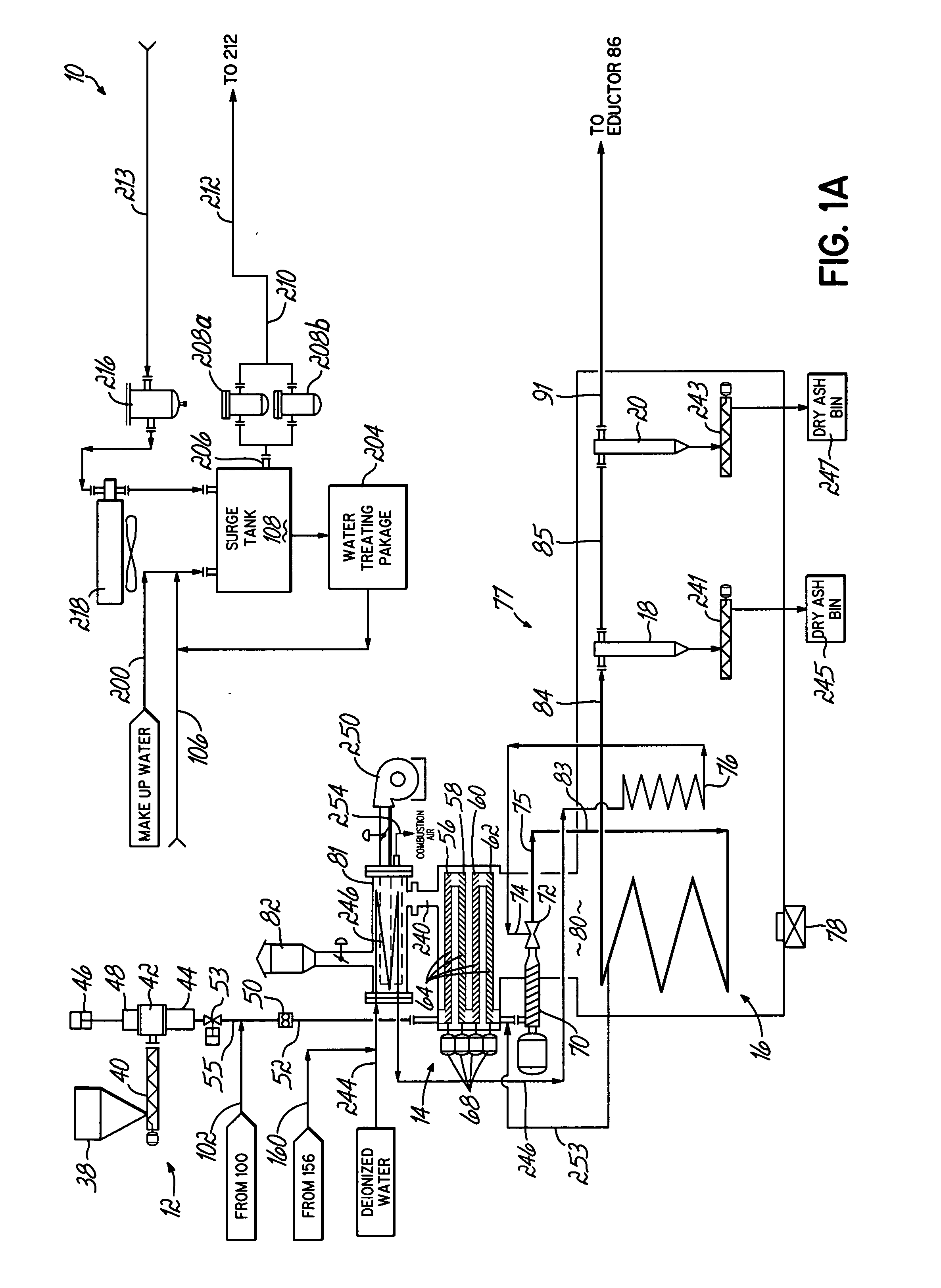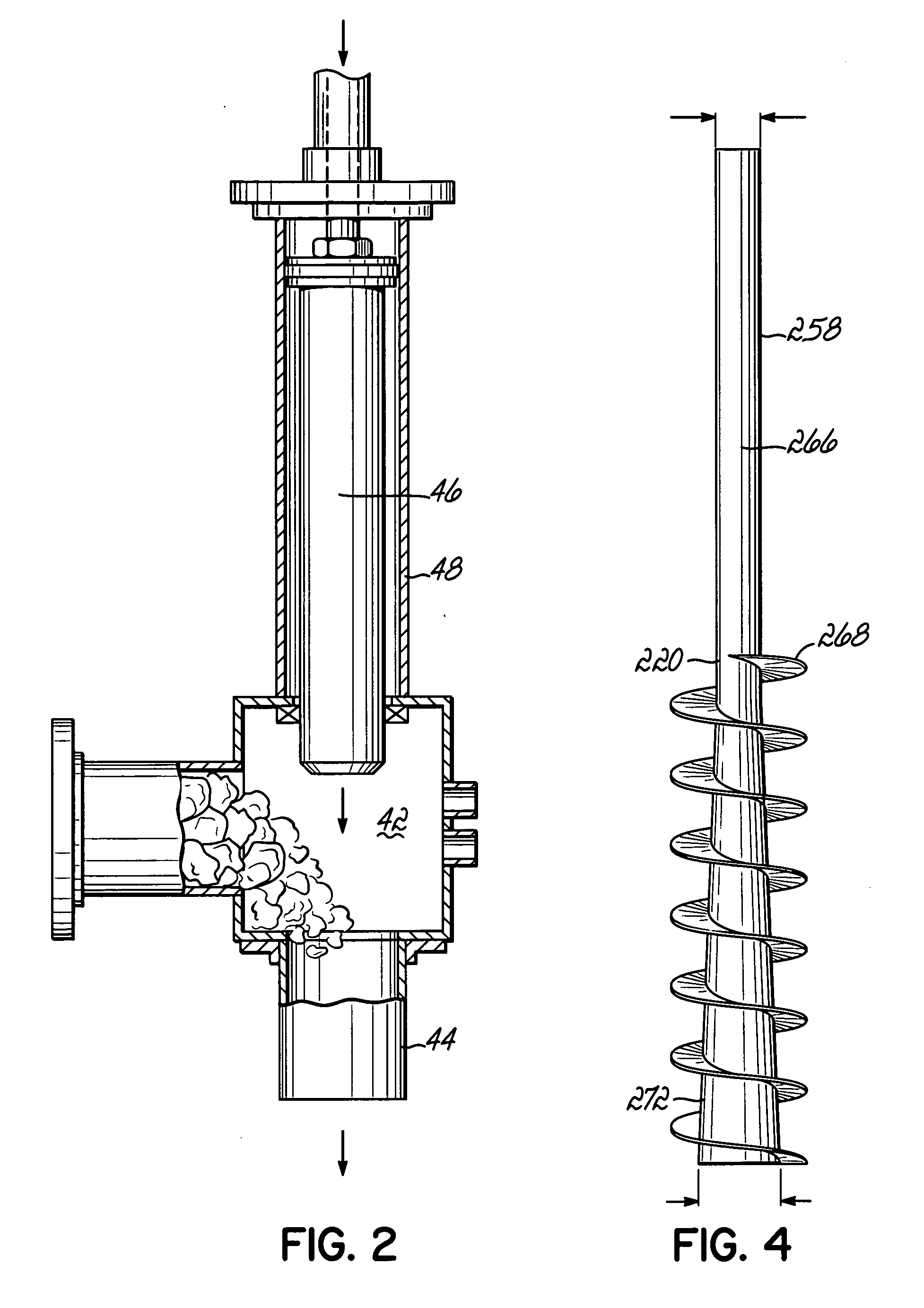Method and apparatus for producing synthesis gas from waste materials
a technology of synthesis gas and waste materials, which is applied in the direction of oxygen compound purification/separation, combustible gas production, and separation processes, etc., can solve the problems of unwanted carbon dioxide, ash and slag production, and achieve the effect of avoiding carbon buildup in the apparatus and preventing unwanted reactions
- Summary
- Abstract
- Description
- Claims
- Application Information
AI Technical Summary
Benefits of technology
Problems solved by technology
Method used
Image
Examples
Embodiment Construction
[0009] As shown diagrammatically in FIGS. 1A and 1B, syn gas facility 10 includes a feed section 12 which communicates with a devolatilization section 14, in turn connected to a reformer reactor 16. The reactor 16 is designed to produce syn gas which passes through particulate separators 18 and 20. The gas is cooled, filtered, and collected for use.
[0010] As shown more particularly in FIGS. 1 and 2, the feed section 12 includes a hopper 38 having an auger 40, which directs cabonaceous feed material to feed chamber 42. The feed chamber 42 is connected to a feed tube 44 which leads to the devolatilization section 14. Above the feed section is a cylindrical support 48 which supports a compacting cylinder 46 designed to force feed material from the feed chamber 42 into the feed tube 44. The feed tube 44 leads to a delumper 50, which communicates via passage 52 to the devolatilization section 14. A gate valve 53 prevents backflow through line 55 from delumper 50.
[0011] The devolatiliza...
PUM
| Property | Measurement | Unit |
|---|---|---|
| temperature | aaaaa | aaaaa |
| temperature | aaaaa | aaaaa |
| temperature | aaaaa | aaaaa |
Abstract
Description
Claims
Application Information
 Login to View More
Login to View More - R&D
- Intellectual Property
- Life Sciences
- Materials
- Tech Scout
- Unparalleled Data Quality
- Higher Quality Content
- 60% Fewer Hallucinations
Browse by: Latest US Patents, China's latest patents, Technical Efficacy Thesaurus, Application Domain, Technology Topic, Popular Technical Reports.
© 2025 PatSnap. All rights reserved.Legal|Privacy policy|Modern Slavery Act Transparency Statement|Sitemap|About US| Contact US: help@patsnap.com



